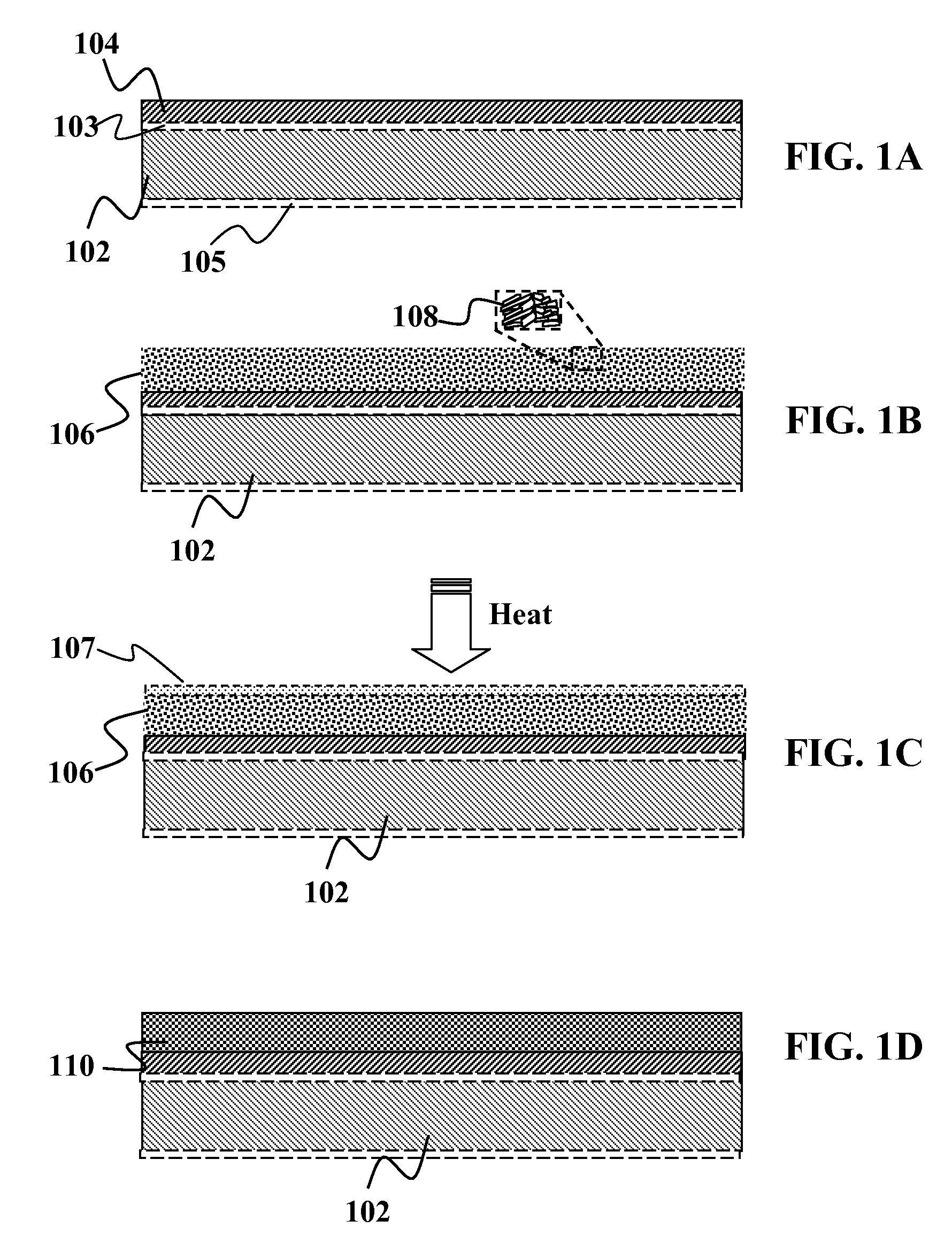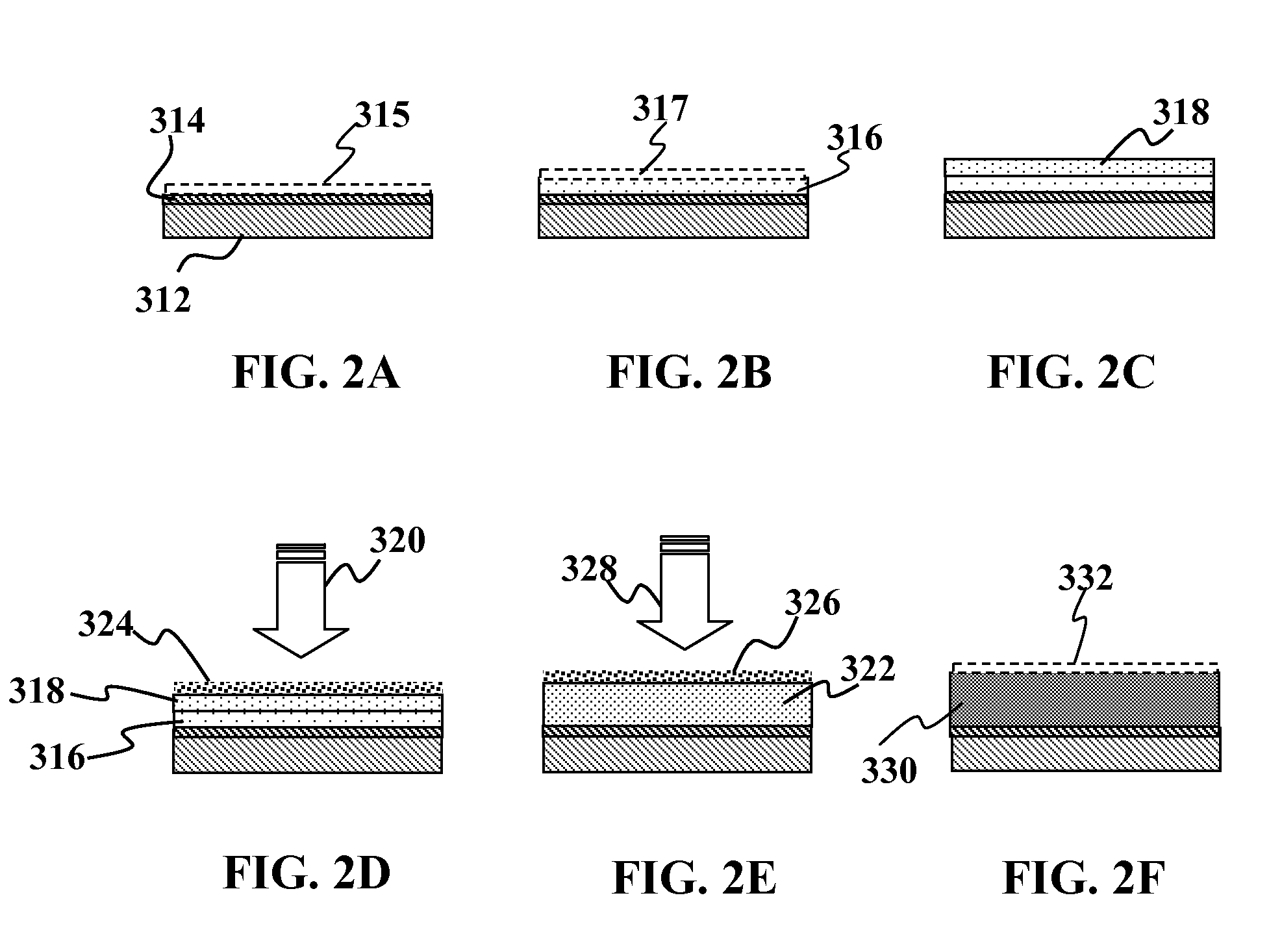Solar cell absorber layer formed from metal ion precursors
a metal ion precursor and solar cell technology, applied in the field of photovoltaic devices, can solve the problems of poor surface coverage, low throughput and high cost of vacuum deposition equipment, and the difficulty of achieving the precise stoichiometric composition over relatively large substrate areas in a manufacturing setting using traditional vacuum deposition processes
- Summary
- Abstract
- Description
- Claims
- Application Information
AI Technical Summary
Benefits of technology
Problems solved by technology
Method used
Image
Examples
embodiment 1
[0060]This embodiment shows the use of Group IB and / or IIIA hydroxide(s) in a polar solvent with a binder.
[0061]A substrate such as an aluminum foil layer with an Mo coating on one side or both sides is provided. Optionally, other metal foils such as stainless steel or copper may also be used in place of the aluminum foil. The foil itself (prior to adding the Mo coating) may include a diffusion barrier layer above and / or below the foil. An approximately 0.5-2.5 um thick layer of a precursor material may be solution deposited over the Mo layer. The precursor material may comprise of a dispersion of nanoparticles of, copper-gallium, elemental gallium, and indium hydroxide. One such example would be a combination of Cu85Ga15, In(OH)3, and elemental gallium. Optionally, the dispersion may comprise of copper nanoparticles and indium-gallium hydroxide. Still optionally, the dispersion may comprise of copper-gallium and indium hydroxide without separate elemental gallium. In one embodiment...
embodiment 2
[0065]This embodiment shows the use of a Group IB and / or IIIA hydroxides in a polar solvent without a binder. Without the binder, the dispersion and / or process is changed so that the process conditions do not require removal of the binder or residues from the binder from the electrodes and / or absorber, and / or junction partner.
[0066]A substrate such as an aluminum foil layer with an Mo coating on one side or both sides is provided. Optionally, other metal foils such as stainless steel or copper may also be used in place of the aluminum foil. The foil itself (prior to adding the Mo coating) may include a diffusion barrier layer above and / or below the foil. An approximately 0.5-2.5 um nm thick layer of a precursor material may be solution deposited over the Mo layer. The precursor material may comprise of a dispersion of copper nanoparticles, gallium, and indium hydroxide. One such example would be a combination of a Cu—Ga alloy, like Cu75Ga25, indium hydroxide, with or without additio...
embodiment 3
[0069]This embodiment shows the use of a Group IB and / or IIIA hydroxides in an apolar solvent with a binder. Some suitable apolar solvents include but are not limited to: halogenated solvents like carbon tetrachloride, ethers like diethylether, aromatics like toluene, and the like.
[0070]A substrate such as an aluminum foil layer with an Mo coating on one side or both sides is provided. Optionally, other metal foils such as stainless steel or copper may also be used in place of the aluminum foil. The foil itself (prior to adding the Mo coating) may include a diffusion barrier layer above and / or below the foil. An approximately 0.5-3.5 um nm thick layer of a precursor material may be solution deposited over the Mo layer. The precursor material may comprise of a dispersion of copper nanoparticles, gallium, and indium hydroxide. One such example would be a combination of a Cu—In alloy, like Cu70In30, indium hydroxide, with elemental gallium. Optionally, the dispersion may include copper...
PUM
 Login to View More
Login to View More Abstract
Description
Claims
Application Information
 Login to View More
Login to View More - R&D
- Intellectual Property
- Life Sciences
- Materials
- Tech Scout
- Unparalleled Data Quality
- Higher Quality Content
- 60% Fewer Hallucinations
Browse by: Latest US Patents, China's latest patents, Technical Efficacy Thesaurus, Application Domain, Technology Topic, Popular Technical Reports.
© 2025 PatSnap. All rights reserved.Legal|Privacy policy|Modern Slavery Act Transparency Statement|Sitemap|About US| Contact US: help@patsnap.com



